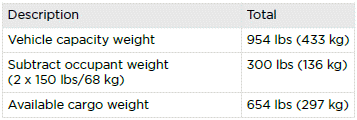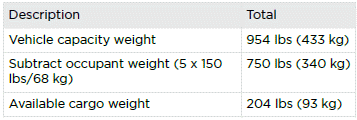Tesla Model X: Vehicle Loading
It is important to understand your vehicle's original tire
sizes and pressures, and the GVWR (Gross Vehicle
Weight Rating) and GAWR (Gross Axle Weight Rating).
This information can be found on two labels attached to
Model X. NOTE: Towing capability is available only if Model X is
equipped with the Towing Package. WARNING: Overloading Model X has an adverse
effect on braking and handling, which can
compromise your safety or cause damage.
CAUTION: Never store large amounts of liquid in
Model X. A significant spill can cause electrical
components to malfunction. Tire and Loading Information Label The Tire and Loading Information label provides: United States/Canada: Mexico: Never change this label, even if you use different tires in
the future.
NOTE:
If Model X is loaded to its full capacity, double check all tires to ensure
they are inflated to their recommended pressure levels. WARNING: Tire pressures printed on the Tire and
Loading Information label DO NOT APPLY to
towing. When towing, tire pressures must be
increased. For information about the tire pressures
required when towing, see Towing and Accessories. The Vehicle Certification label provides: United States: Canada: Mexico: CAUTION: To prevent damage, never load Model X
so that it is heavier than GVWR or exceeds the
individual GAWR weights. 1. Locate the statement "The combined weight of
occupants and cargo should never exceed XXX lbs or
XXX kg" on the "Tire and Loading Information" label.
2. Determine the combined weight of all occupants that
will ride in the vehicle.
3. Subtract the combined weight of the occupants from
XXX lbs or XXX kg (see Step 1).
4. The resulting figure equals the available cargo load
capacity. For example, if the "XXX" amount equals
1400 lbs (635 kg) and there will be five 150 lb (68 kg)
passengers in the vehicle, the amount of available
cargo capacity is 650 lbs (1400 ‑ 750
(5 x 150) = 650 lbs) or 295 kg (635 ‑ 340
(5 x 68) = 295 kg).
5. Determine the combined cargo weight being loaded
on the vehicle. That weight must not exceed the
available cargo load capacity calculated in Step 4. WARNING: Trunks are the preferred places to
carry objects. In a collision, or during hard braking
and sharp turns, loose items in the cabin could
injure occupants. Example Load Limit Calculations How much cargo Model X can carry depends on the
number and weight of passengers. The following
calculated load limit examples assume passengers weigh
150 lbs (68 kg). If passengers weigh more or less,
available cargo weight decreases or increases
respectively. Driver and one passenger Driver and four passengers The cargo weight should be distributed as evenly as
possible between the front and rear trunks. CAUTION: Never load more than 110 lbs (50 kg) in
the front trunk. Doing so can cause damage. CAUTION: Never load more than 176 lbs (80 kg) in
the lower tub compartment of the rear trunk or
more than 397 lbs (180 kg) on the upper floor.
Doing so can cause damage.Vehicle Labeling
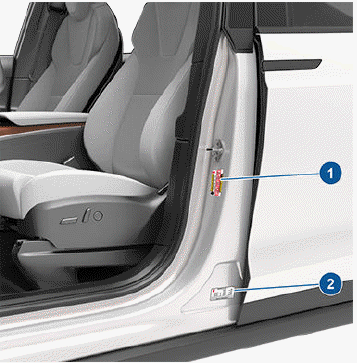
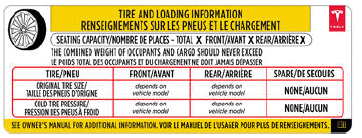
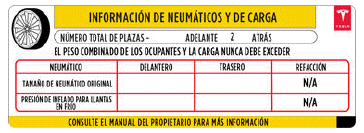
Vehicle Certification Label
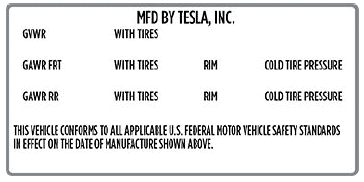
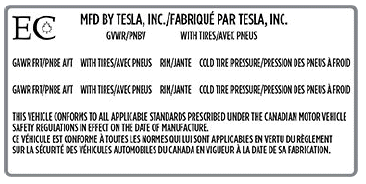
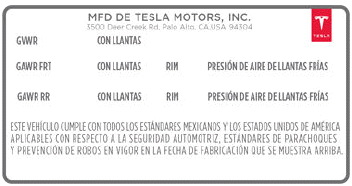
Calculating Load Limits
